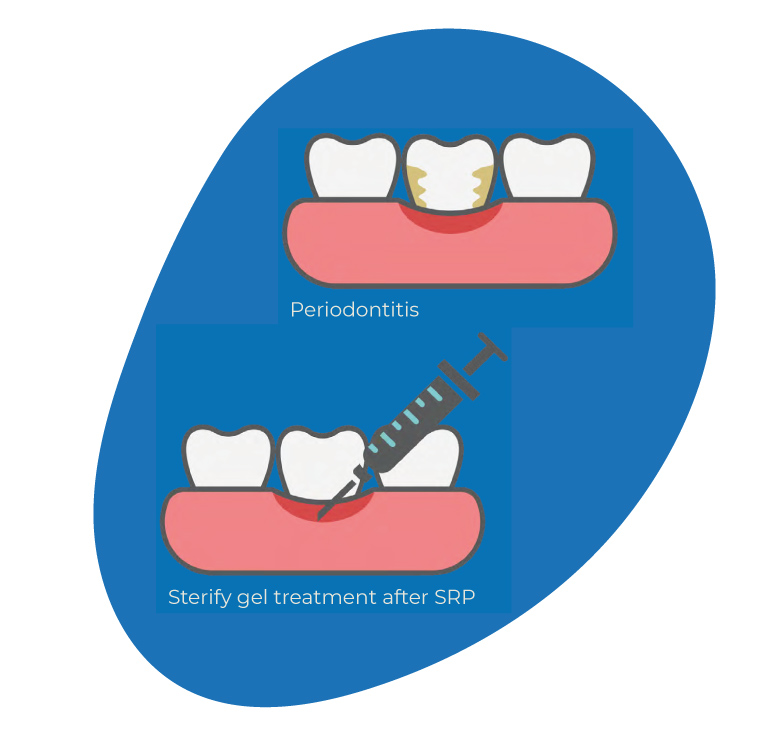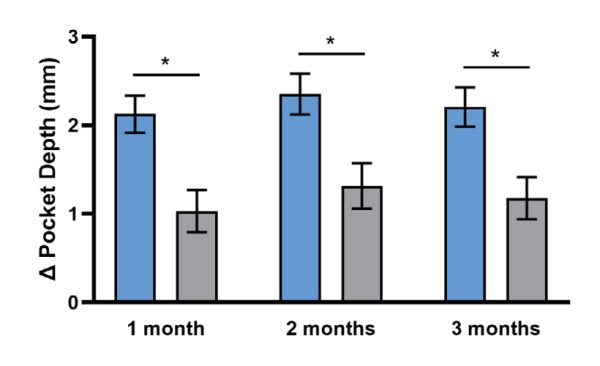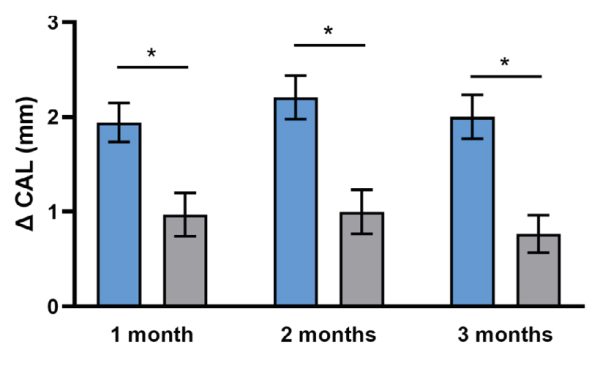
Periodontitis
Periodontal disease is an infectious disease that affects about 70% of the adult population, leading to the destruction of the tooth-supporting tissues due to inflammatory reactions triggered by the bacterial biofilm on dental surfaces. The disease is diagnosed through measuring the depth of periodontal pockets, detecting bleeding, and sometimes identifying the bacterial types present.
Available treatments include non-surgical therapy and combinations with scaling and root planing (SRP) to remove the bacterial biofilm and promote healing.
Although SRP is considered a gold standard treatment for periodontitis and peri-implantitis, exposure of the gingival pockets can allow bacteria to re-colonize the tissues promoting new inflammation that can worsen the clinical picture.
Sterify Gel may find useful application in cases of moderate to advanced chronic periodontal disease as an adjunctive treatment following SRP to improve and accelerate healing parameters and prevent inflammation and recurrent infection. In addition, antimicrobial control action prevents the use of antibiotics and the risk associated with antimicrobial resistance. Such control of periodontal disease also allows the retention of patients who cannot undergo surgical treatment.

Gum disease is linked to diabetes, cardiovascular disease, and other conditions.
Maintaining healthy gums can help prevent other diseases and help you recover from them.

Results












